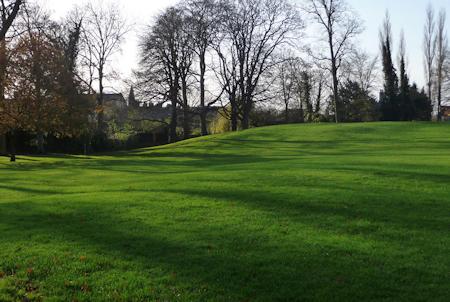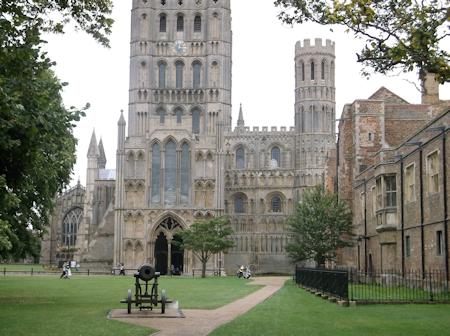
Ely Castle
Ely Castle, or Cherry Hill Castle as it is sometimes known, was originally a wooden motte-and-bailey castle. It was re-fortified during the Anarchy in the 12th Century before being finally destroyed in the mid-13th Century.
A Centre of Saxon Resistance
In medieval times the land around Ely was quite different to the pleasant rolling farmland we see today. It was boggy marshland with very few ways in for an attacking army. It was an area that was naturally easy to defend.
The town of Ely formed around the monastery that had been established in the 7th Century. By the time of the Doomsday Survey it was notable for being the second richest in England.
The first castle at Ely was built by William the Conqueror in 1070. Ely had become a refuge for English forces fighting the Norman invasion. Forces under Hereward the Wake and Morcar, Earl of Northumberland had used Ely as a base to attack nearby Peterborough Abbey.
William's castle was a wooden motte-and-bailey. Cherry Hill itself formed the motte, though it's unclear whether it was built for the castle or if an existing mound was built up.
The castle did its job and was quickly abandoned. The new Norman abbot of Ely rebuilt the abbey and in the early 12th Century it became the seat of the Bishop of Ely.
Nigel, Bishop of Ely
Nigel became Bishop of Ely in 1133. By that time he was already a powerful man, having served as Treasurer of England under King Henry I. He continued to serve under King Stephen, but when his uncle, Roger of Salisbury, died in the King's custody in 1139, Nigel revolted and joined Empress Matilda's side.
In early 1140 he returned to his bishopric at Ely and re-fortified the old castle in stone. He was besieged and the castle fell to Stephen's forces. In 1142 Nigel submitted to the King and Geoffrey de Mandeville took over.
Geoffrey was a rebel and bandit. He used the fenland around the Isle of Ely as his headquarters until he was finally killed by Stephen's forces in 1144.
Ely Castle played its part in the two Baron's Wars. It was taken by Falkes de Breaute in 1216 and it was captured again in 1268. It is thought to have been demolished shortly afterwards. Some mentions of the castle appear in later papers, but historians think that these refer to the Cherry Hill, the motte, rather than an actual fortification.
Excavations
Today nothing remains of the castle built at Ely. The motte is a tree-lined park, Cherry Hill Park, sitting just south of the Cathedral.
An excavation undertaken in 2002 revealed artefacts dating from the Vikings right through the Norman period. The site was closed down in 2003 and its findings can be seen at nearby Ely Museum.
The park is open to the public and the nearby Ely Cathedral, which is well worth a visit in itself, has a cafe and shop.
Status: Site
Owner: Chapter of Ely Cathedral
Opening Times: Free access to park.


Cherry Hill Park - the site of Ely Castle's motte

Ely Cathedral